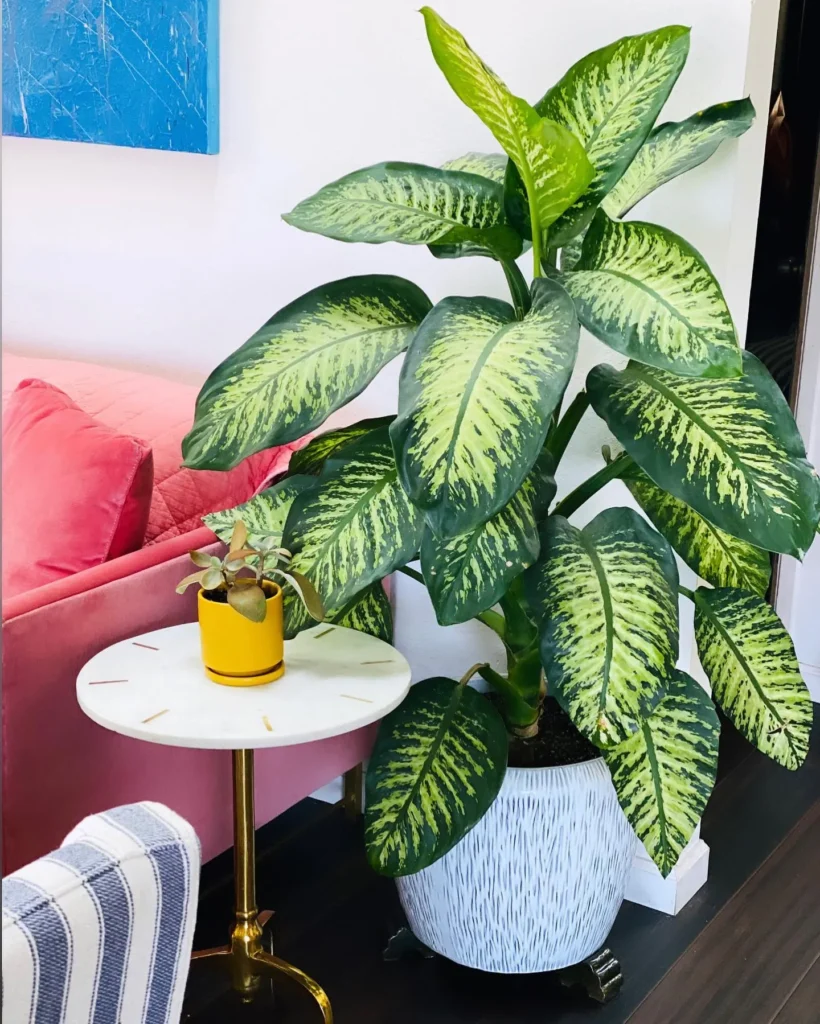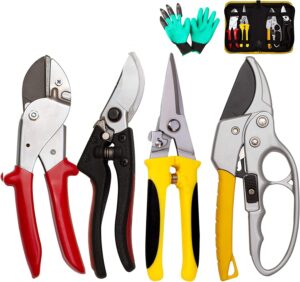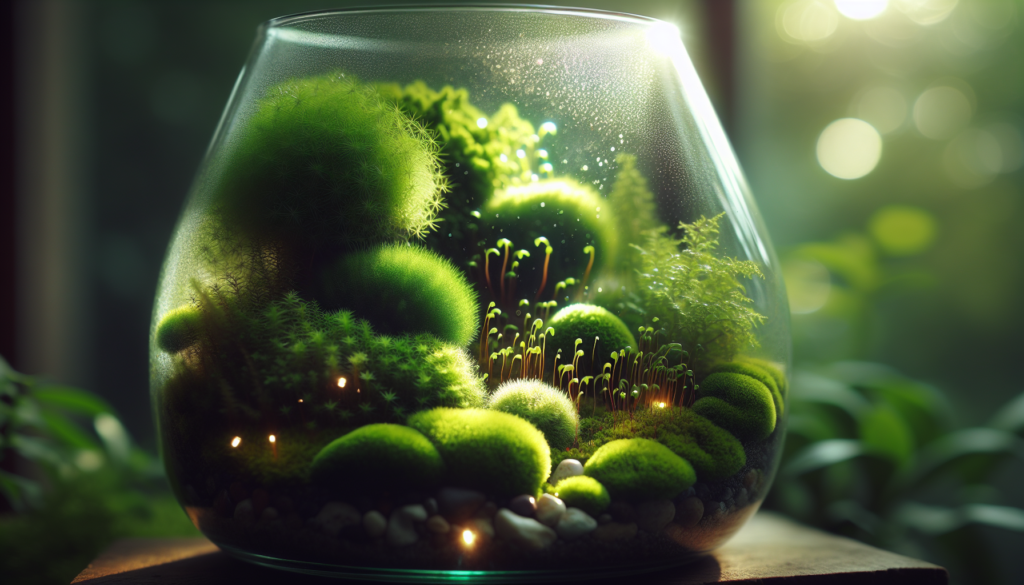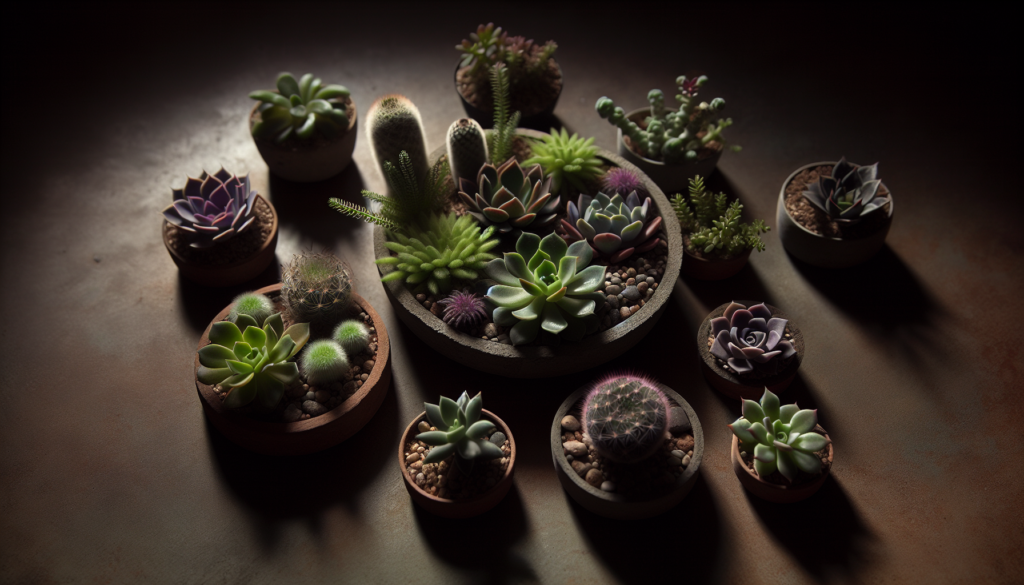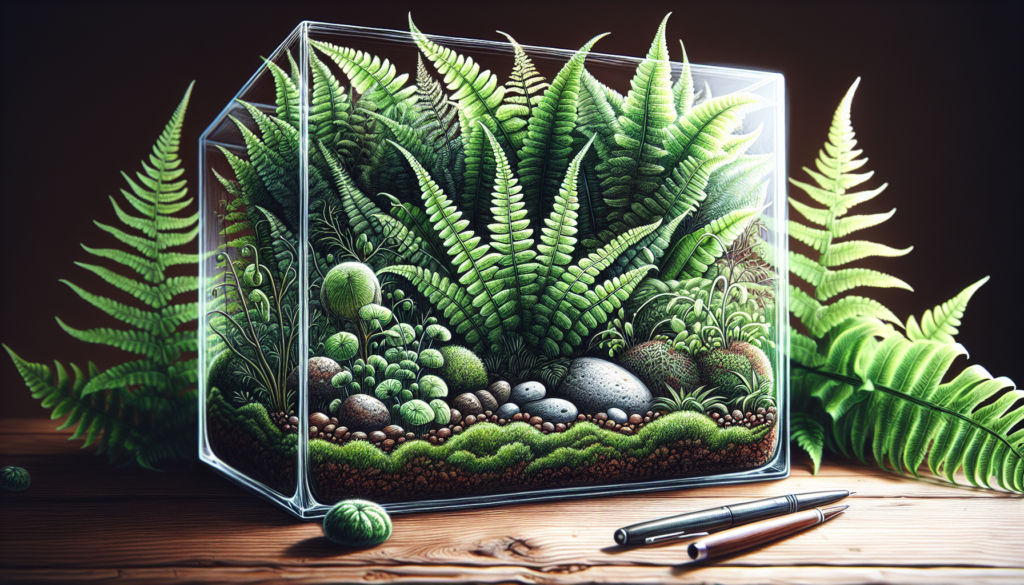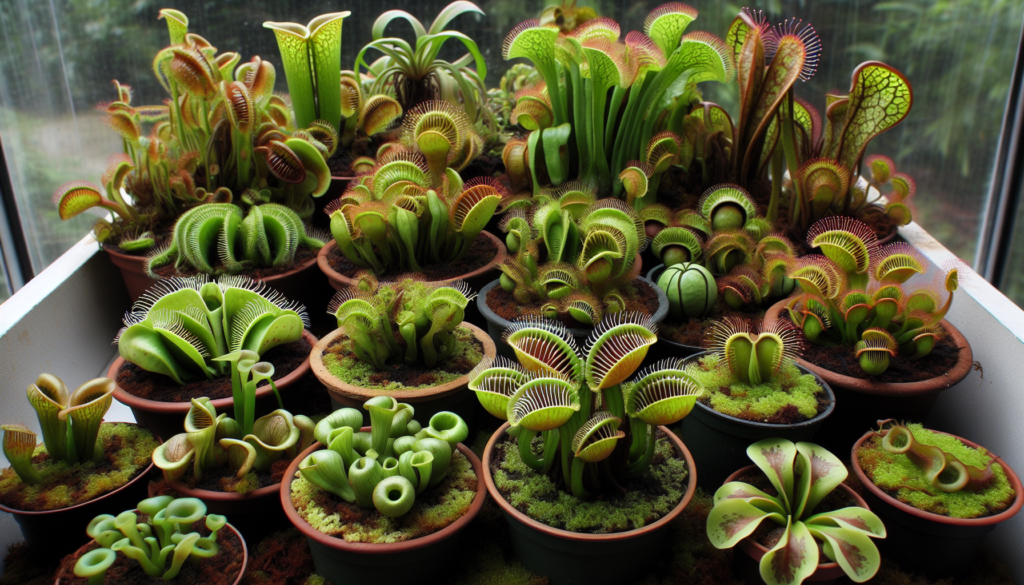Fertilize Dieffenbachia every 4-6 weeks during the growing season with a balanced, water-soluble fertilizer diluted to half the recommended strength for healthy growth.
This guide offers comprehensive advice on fertilizing Dieffenbachia, emphasizing the importance of proper nourishment for robust growth and foliage.
It details the plant’s specific nutritional requirements, optimal fertilizer selection, application timing, and methods, while cautioning against over-fertilization. It also explores natural alternatives and the interplay between pruning and feeding, urging regular assessment of the plant’s health and progress to encourage thriving conditions.
Understanding Dieffenbachia Fertilization Needs
Before we delve into the fertilizing tips for Dieffenbachia, it’s crucial to understand the specific needs of this plant when it comes to fertilization. By meeting its basic requirements in terms of nutrients, frequency of fertilization, and the best types of fertilizer to use, you can ensure its optimal growth and health.
Dieffenbachia plants thrive when provided with the right balance of essential nutrients. They require a fertilizer that is rich in nitrogen, phosphorus, and potassium. These nutrients support the plant’s overall growth, strengthen its root system, and enhance leaf development.
In terms of frequency, it is recommended to fertilize Dieffenbachia plants every 4 to 6 weeks during the growing season, which typically spans from spring to early fall. These plants enter a period of dormancy during winter, so it is essential to reduce or stop fertilization during this time to avoid overwhelming the plant.
When choosing a fertilizer for Dieffenbachia, opt for a balanced, water-soluble formula that is specifically designed for indoor plants. These fertilizers typically come with instructions on the packaging regarding the proper dilution ratio and application method.
Remember, over-fertilizing can be detrimental to the health of your Dieffenbachia. It’s important to follow the instructions provided on the fertilizer packaging and avoid applying more fertilizer than recommended. Over time, excessive fertilizer can lead to a buildup of salts in the soil, causing leaf burn and other adverse effects.
Choosing the Right Fertilizer for Dieffenbachia
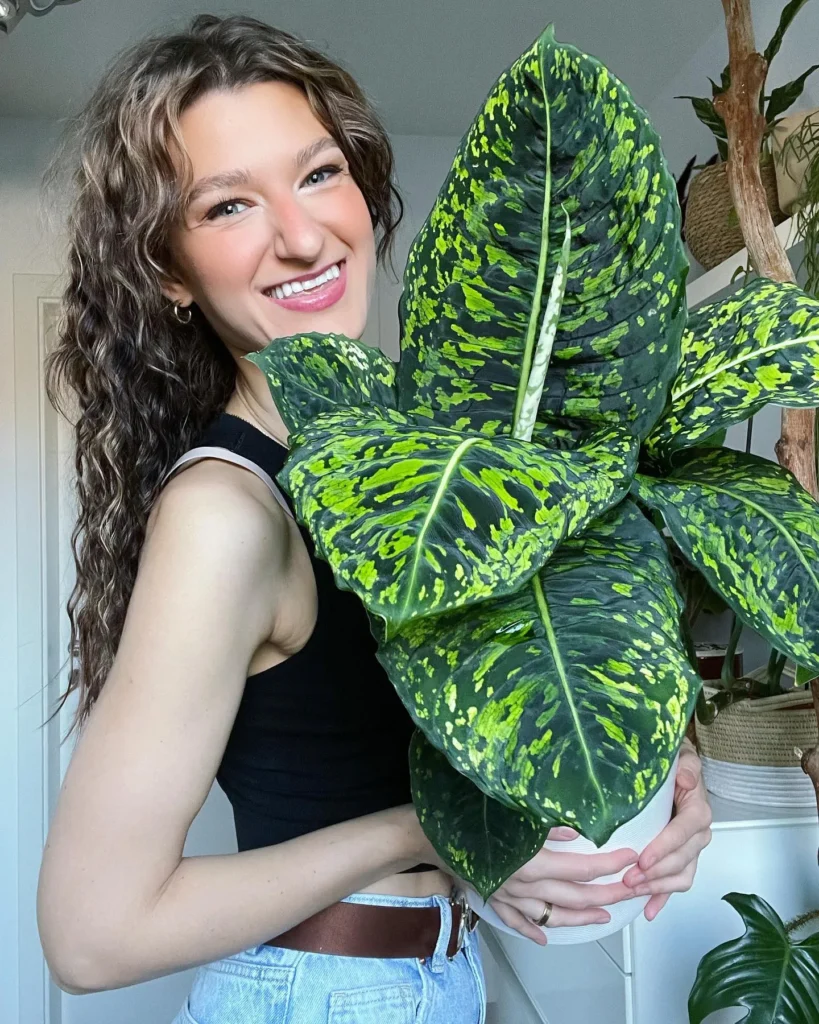
When it comes to fertilizing your Dieffenbachia, choosing the right fertilizer is crucial for promoting healthy growth. Not all fertilizers are created equal, and selecting the best one for your plant can make a significant difference in its overall well-being.
There are several types of fertilizers available in the market, each with its own unique composition and benefits. Let’s take a closer look at some of the options:
- All-purpose granular fertilizer: This type of fertilizer provides a balanced blend of essential nutrients that ensures the overall health of your Dieffenbachia. It typically contains nitrogen, phosphorus, and potassium, along with other essential elements.
- Slow-release fertilizer: If you prefer a low-maintenance approach, slow-release fertilizers are a great choice. These granules gradually release nutrients over an extended period, providing a steady supply of food for your Dieffenbachia.
- Organic fertilizers: For those who prefer natural alternatives, organic fertilizers offer an eco-friendly option. Made from plant or animal-based materials, these fertilizers provide nutrients to your Dieffenbachia in a slow-release form.
- Foliar fertilizers: These liquid fertilizers are applied directly to the leaves of the plant. They are quickly absorbed by the foliage, providing an immediate nutrient boost. However, it’s important to follow the manufacturer’s instructions carefully when using foliar fertilizers.
Watering Christmas Cactus
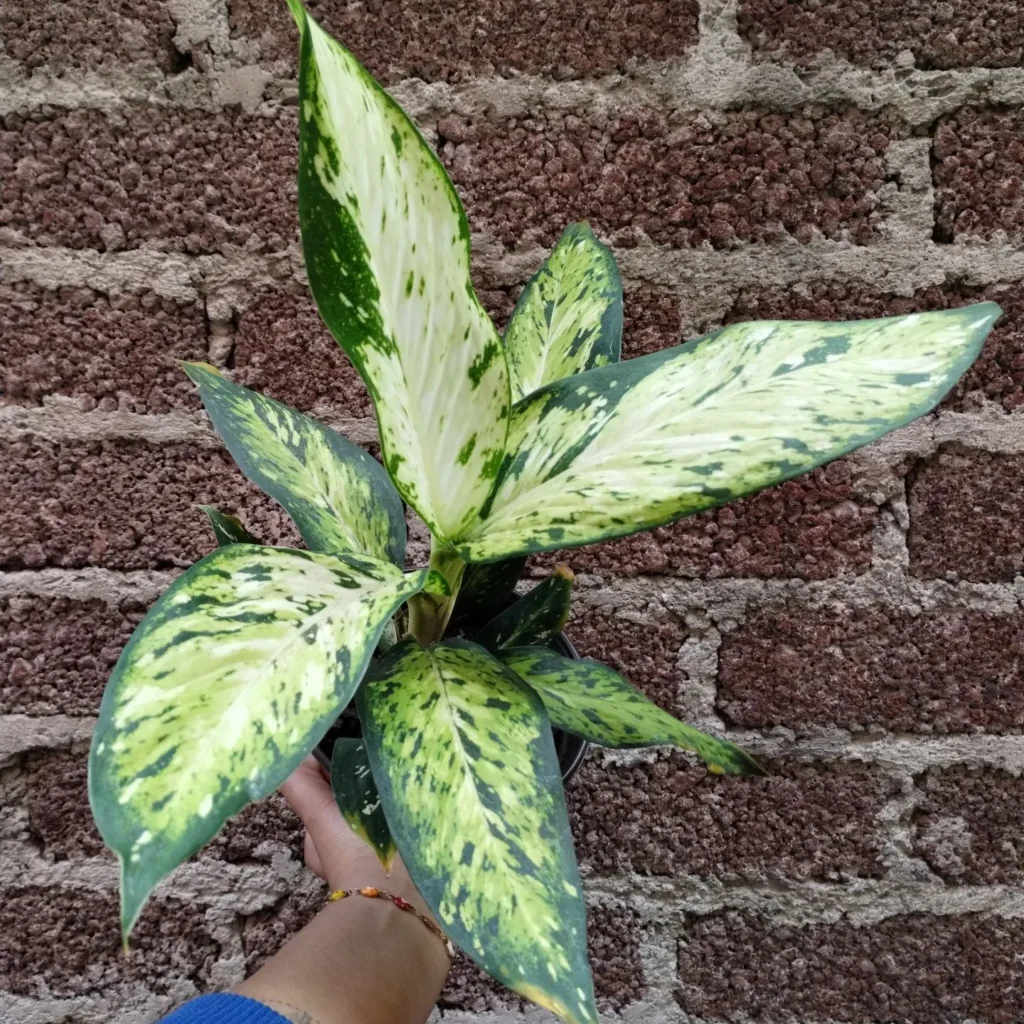
Timing plays a crucial role when it comes to fertilizing your Dieffenbachia. Applying fertilizer at the right time ensures optimal growth and development of your plant. Here’s a guide to help you determine the ideal timing for fertilization:
- Start fertilizing your Dieffenbachia in the spring when it enters its active growth phase. This is the time when the plant requires an extra boost of nutrients to support healthy foliage.
- Fertilize once a month during the growing season, which typically lasts from spring to early fall. This allows the plant to benefit from a regular supply of nutrients as it actively produces new leaves.
- Reduce the frequency of fertilization to once every two months during the winter months when the Dieffenbachia enters a dormant period. The plant’s growth slows down during this time, so it requires fewer nutrients.
How to Apply Fertilizer to Dieffenbachia
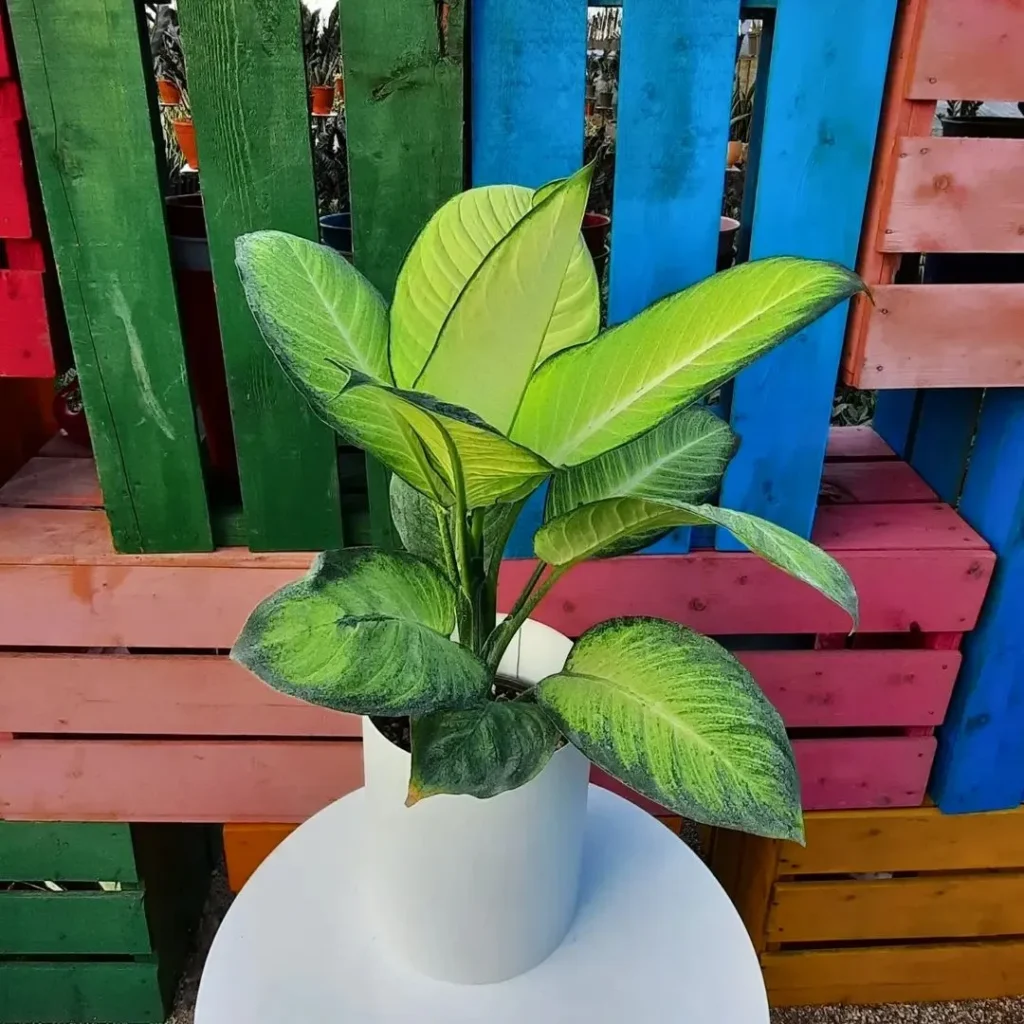
Properly applying fertilizer to your Dieffenbachia plant is crucial for ensuring the effective absorption of nutrients. By following these steps, you can achieve even and consistent distribution of fertilizer, promoting healthy growth and vibrant foliage.
- Start by choosing a well-balanced fertilizer specifically formulated for houseplants.
- Measure the appropriate amount of fertilizer according to the instructions on the packaging.
- Gently loosen the top layer of soil around the base of your Dieffenbachia.
- Using a watering can or a fertilizer injector, slowly pour the prepared fertilizer solution into the soil.
- Ensure that the fertilizer is evenly distributed, avoiding excessive concentration in one area.
- Avoid getting the fertilizer on the leaves or stems of the plant, as it may cause burn or damage.
- After applying the fertilizer, water the plant lightly to help the nutrients penetrate the soil.
- Use a clean cloth or paper towel to wipe off any fertilizer residue on the plant surface.
- Keep track of the fertilization schedule, as over-fertilizing can harm your Dieffenbachia.
Dos and Don’ts of Dieffenbachia Fertilization
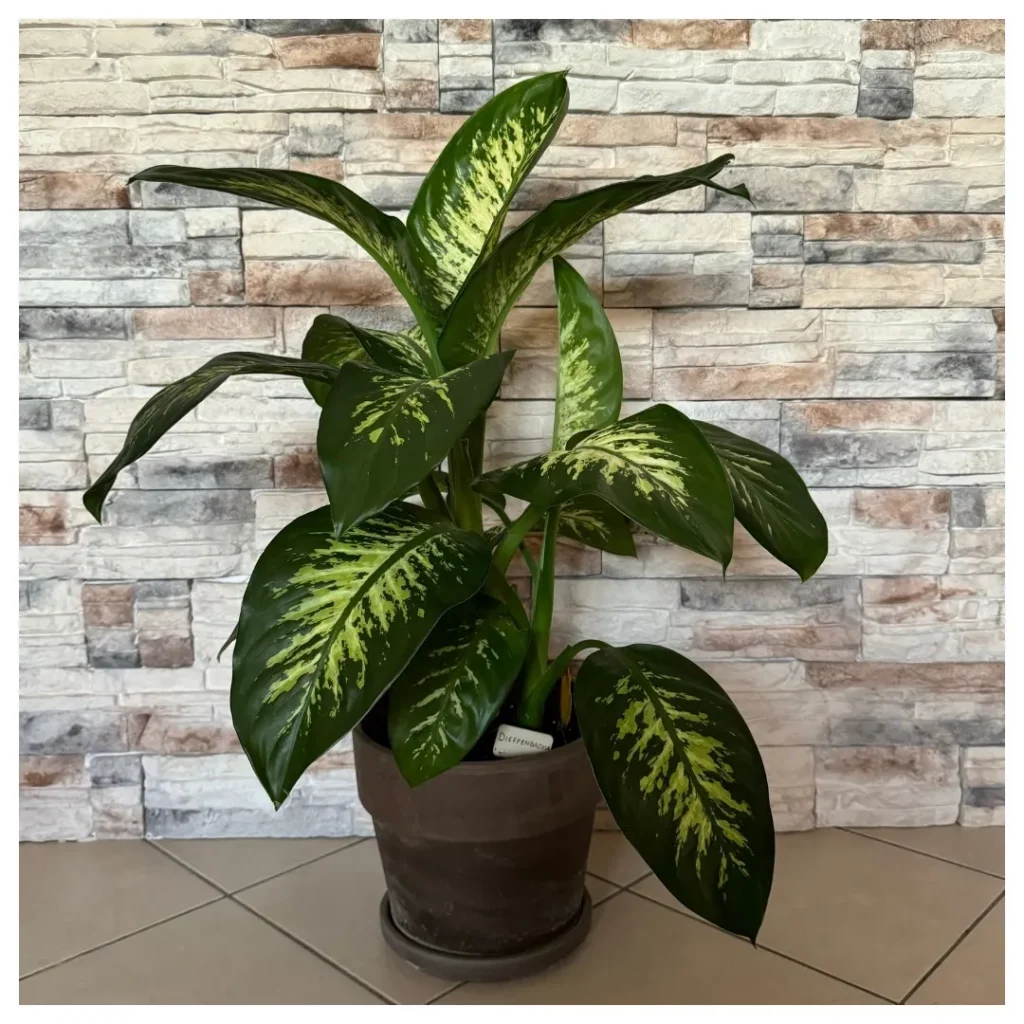
Proper fertilization is essential for the healthy growth of your Dieffenbachia plant. However, it’s important to follow certain guidelines to ensure you don’t inadvertently harm your plant. Here are some dos and don’ts to keep in mind:
Dos:
- Do choose a balanced fertilizer specifically formulated for foliage plants like Dieffenbachia. This will provide the necessary nutrients for optimal growth.
- Do read the label instructions carefully and follow the recommended dosage. Overfertilization can lead to burning of the plant’s roots.
- Do dilute liquid fertilizers according to the instructions provided. Concentrated solutions can cause nutrient imbalances and damage the roots.
- Do fertilize your Dieffenbachia during the active growing season, which is typically spring and summer. This will provide the plant with extra nutrients to support its growth.
- Do apply the fertilizer evenly around the base of the plant. This will ensure that the nutrients are distributed evenly to all parts of the plant.
- Do water your Dieffenbachia after fertilizing to help the nutrients penetrate the soil and reach the roots.
Don’ts:
- Don’t use fertilizers that contain high levels of nitrogen. This can lead to excessive leaf growth at the expense of root development, making the plant top-heavy.
- Don’t fertilize your Dieffenbachia during the dormant period, which is usually in fall and winter. The plant requires less nutrients during this time as its growth slows down.
- Don’t exceed the recommended frequency of fertilization. Too much fertilizer can cause salt buildup in the soil, leading to root damage.
- Don’t apply fertilizer directly to the leaves of your Dieffenbachia. This can burn the foliage and leave unsightly marks.
- Don’t fertilize your Dieffenbachia if it’s showing signs of stress, such as wilting or yellowing leaves. Address the underlying issue before resuming fertilization.
- Don’t use an all-purpose fertilizer meant for flowering plants. Dieffenbachia requires a different nutrient ratio to support its lush foliage.
Signs of Over-Fertilization in Dieffenbachia
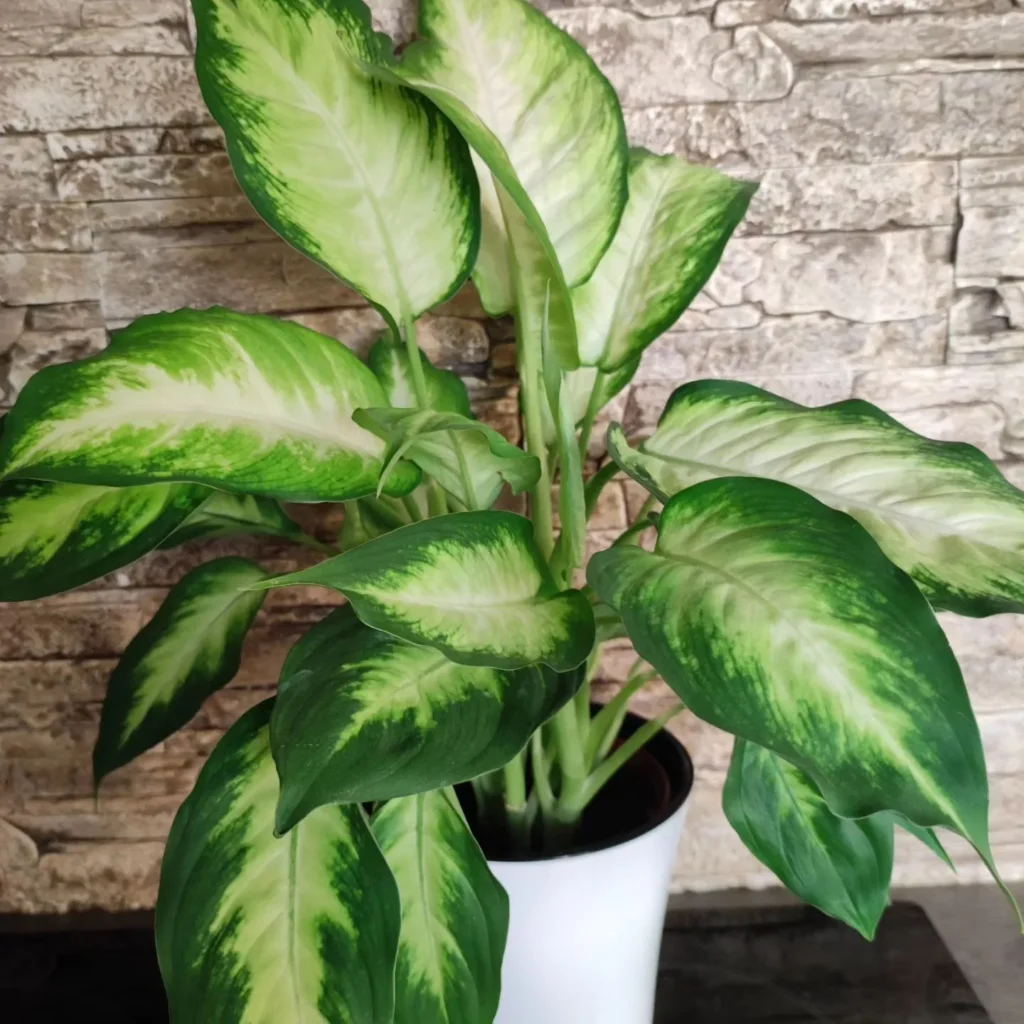
Over-fertilizing your Dieffenbachia can have negative consequences on its overall health and well-being. It’s important to be aware of the signs that indicate your plant may be receiving too much fertilizer, so you can take the necessary steps to remedy the situation.
Here are some common signs of over-fertilization to look out for:
- Leaf Burn: If you notice brown, scorched edges or spots on the leaves of your Dieffenbachia, it could be a sign of over-fertilization. The excess nutrients can cause leaf burn, leading to unsightly and unhealthy foliage.
- Wilting: Over-fertilization can disrupt the balance of moisture within the plant, causing it to wilt. If your Dieffenbachia is consistently drooping and lacking vitality, it may be a result of excessive fertilizer application.
- Yellowing Leaves: Yellow leaves that appear weak and limp can indicate an imbalance of nutrients caused by over-fertilization. The plant may struggle to absorb water and essential minerals, resulting in nutrient deficiency.
- Stunted Growth: While fertilizers are meant to promote growth, too much of them can have the opposite effect. If you notice that your Dieffenbachia’s growth has slowed down or become stunted, it may be a sign that excessive fertilizer is hindering its development.
- Soil Build-Up: Over time, excessive fertilizer can build up in the soil, resulting in a white crust on the surface. This build-up can negatively affect the plant’s root system and hinder its ability to absorb nutrients effectively.
Troubleshooting Nutrient Deficiencies in Dieffenbachia
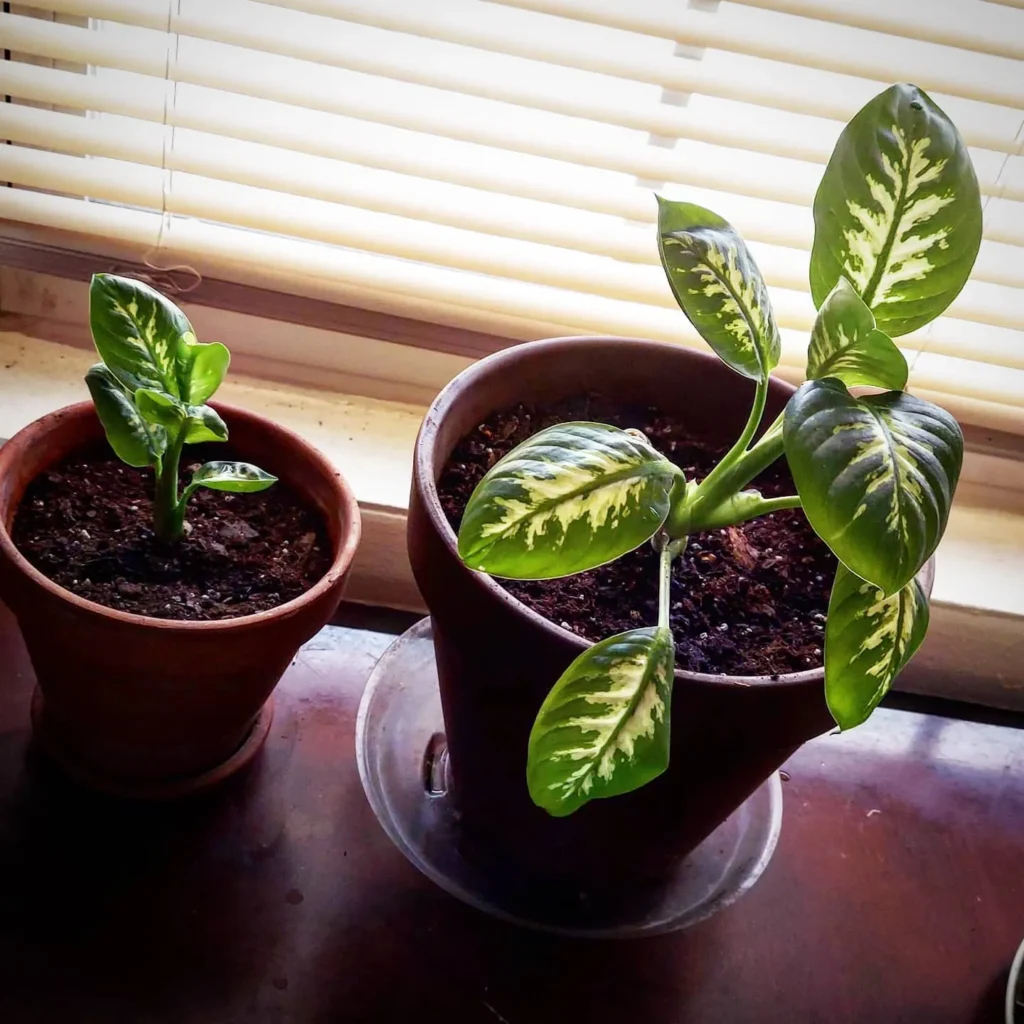
Nutrient deficiencies can have a profound impact on the health and vitality of your Dieffenbachia plants. To ensure that your plant thrives with vibrant foliage, it’s important to identify and address common nutrient deficiencies promptly.
One of the key indicators of nutrient deficiencies is the appearance of specific symptoms in the plant’s leaves. By closely examining your Dieffenbachia, you can often determine the lacking nutrients based on the visual cues it presents.
Some common nutrient deficiencies that can affect Dieffenbachia include:
- Iron deficiency: Also known as chlorosis, this manifests as yellowing leaves with green veins.
- Nitrogen deficiency: You may notice slow growth, pale or yellow leaves, and weak stems.
- Phosphorus deficiency: This can result in dark green or purple leaves, stunted growth, and reduced flowering.
- Potassium deficiency: It can cause yellowing or browning leaf edges, weak stems, and poor overall growth.
Alternative Natural Fertilizers for Dieffenbachia

If you prefer using natural alternatives to synthetic fertilizers, there are several organic options that can effectively nourish your Dieffenbachia plant and promote healthy growth. These natural fertilizers provide essential nutrients while being environmentally friendly.
Here are some alternatives to consider:
- Compost: Utilize homemade compost or purchase organic compost from reputable sources. Compost provides a rich source of nutrients and improves soil structure, promoting healthy root development.
- Manure: Well-rotted animal manure, such as cow or chicken manure, can be used as a nutrient-rich natural fertilizer. Make sure to age the manure properly to prevent burning the plant’s roots.
- Seaweed extract: Seaweed-based fertilizers contain beneficial minerals and trace elements that enhance plant growth. They also help improve soil structure and boost the plant’s natural defenses against pests and diseases.
- Bone meal: Derived from ground animal bones, bone meal is a slow-release fertilizer rich in phosphorus and calcium. It promotes strong root development and flowering in Dieffenbachia plants.
- Fish emulsion: This organic fertilizer is made from fermented fish waste and provides a range of essential nutrients. It is particularly beneficial for promoting leafy growth in Dieffenbachia plants.
- Green tea: Diluted green tea can be used as a natural fertilizer for Dieffenbachia. The antioxidants and nutrients present in green tea help nourish the plant and improve its overall health.
Frequency of Fertilizing Dieffenbachia

Understanding the appropriate frequency of fertilizing your Dieffenbachia plant is crucial for its optimal growth and overall health. By following a proper fertilization schedule, you can provide your plant with the necessary nutrients it needs to thrive throughout different seasons.
Dieffenbachia plants have varying fertilization needs depending on factors such as their growth rate, environmental conditions, and the type of fertilizer used.
As a general guideline, it is recommended to fertilize your Dieffenbachia every month during the growing season, which typically spans from spring to fall.
During the inactive period, which is usually winter, the plant’s growth slows down, and therefore, fertilization requirements decrease. It is advised to reduce the frequency of fertilizing Dieffenbachia to once every two to three months during this period to avoid over-fertilization.
Fertilizing frequency can also be influenced by other factors, such as the soil quality and the overall health of the plant. It is important to observe the condition of your Dieffenbachia and adjust the fertilization schedule accordingly.
If the plant exhibits signs of nutrient deficiencies or poor growth, it may be necessary to increase the frequency of fertilizing or adjust the nutrient balance.
To keep track of your fertilization schedule, consider adding reminders to your calendar or setting specific dates for fertilizing your Dieffenbachia.
Regularly monitoring the plant’s response to fertilizer will help you fine-tune the frequency and ensure optimal results.
Pruning and Fertilizing Dieffenbachia
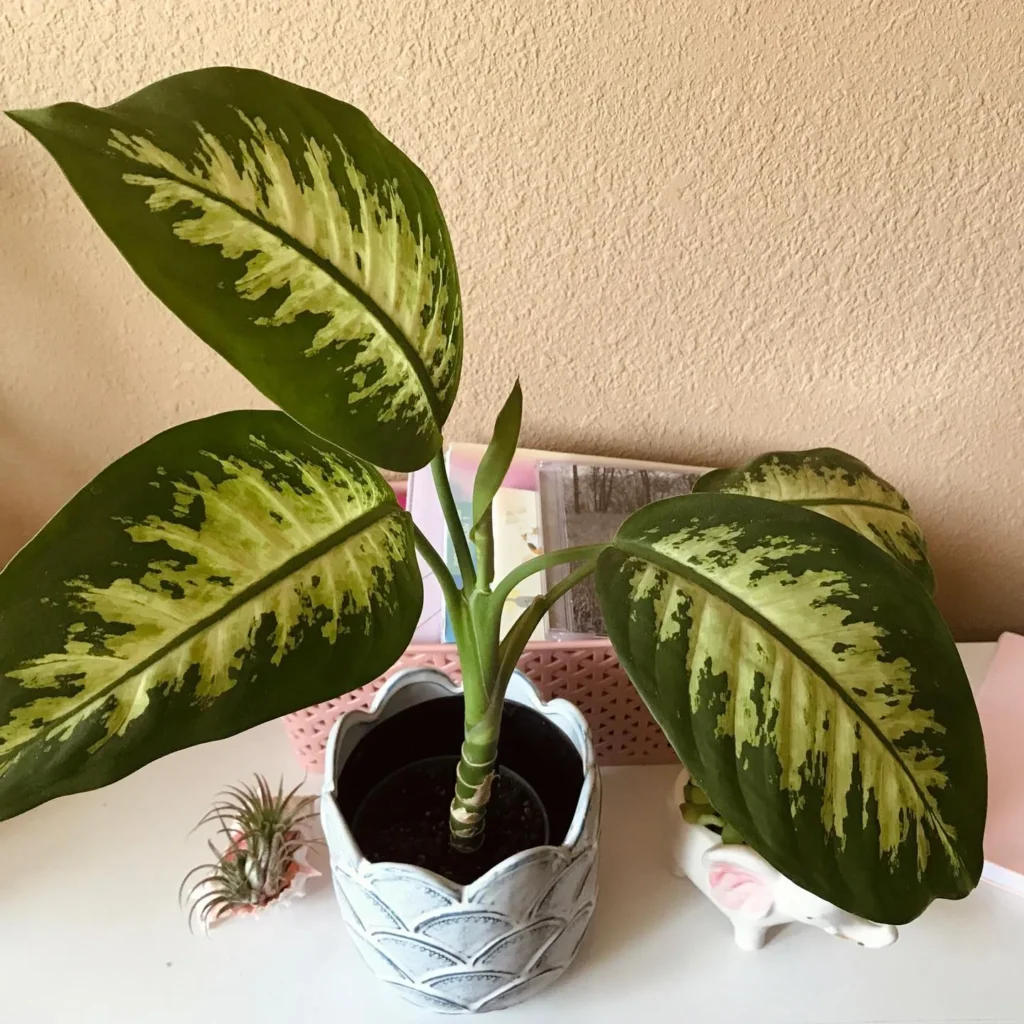
When it comes to caring for your Dieffenbachia plant, pruning and fertilizing can work hand in hand to promote healthy growth. Pruning is the process of removing dead or overgrown parts of the plant, and it can play a crucial role in maximizing the effects of fertilization.
Pruning your Dieffenbachia helps maintain its overall shape and encourages new growth. By removing unhealthy or damaged leaves, you allow the plant to focus its energy on developing new foliage.
Additionally, pruning can improve airflow and prevent the growth of mold or pests.
But how does pruning relate to fertilization? Well, when you remove old leaves during pruning, you are essentially reducing the plant’s nutrient demand. This means the nutrients provided by fertilizers can be more efficiently utilized by the remaining healthy foliage, resulting in stronger and more vibrant growth.
When pruning, always use clean, sterilized pruning shears to prevent the spread of diseases. Cut back the stems just above a leaf node at a 45-degree angle to encourage new growth. Take care not to remove too many leaves at once, as this can shock the plant.
After pruning, it’s an ideal time to fertilize your Dieffenbachia. The plant’s trimmed-down foliage will be better equipped to absorb and utilize the nutrients provided by the fertilizer.
Follow the fertilizing tips mentioned earlier in this article and ensure you choose the right fertilizer for your plant’s specific needs.
Monitoring Dieffenbachia Growth Progress

After implementing the fertilizing tips for your Dieffenbachia plant, it is crucial to monitor its growth progress to ensure ongoing health and vibrancy. By observing and evaluating the effects of fertilization, you can make necessary adjustments and provide the best care for your plant.
One effective way to monitor Dieffenbachia growth is by keeping track of its foliage development. Look for new leaf growth and examine the color, size, and overall appearance of the leaves.
Healthy plants will showcase vibrant green leaves with no signs of discoloration or wilting.
In addition to foliage, pay attention to the plant’s overall vigor and energy. Observe if it appears robust and full of life, or if it seems weak and droopy. Healthy Dieffenbachia plants will exhibit an upright stance with sturdy stems and abundant foliage.
Regularly inspect the roots of your Dieffenbachia as well. Healthy roots should be white or light-colored, firm, and well-developed. If you notice any mushy or discolored roots, it may indicate overwatering or poor drainage, which can hinder growth.


